We talk a lot about guns around here, but guns are of course only half of the “pew pew” equation. Guns are great, but they’re only really as good as the ammo.
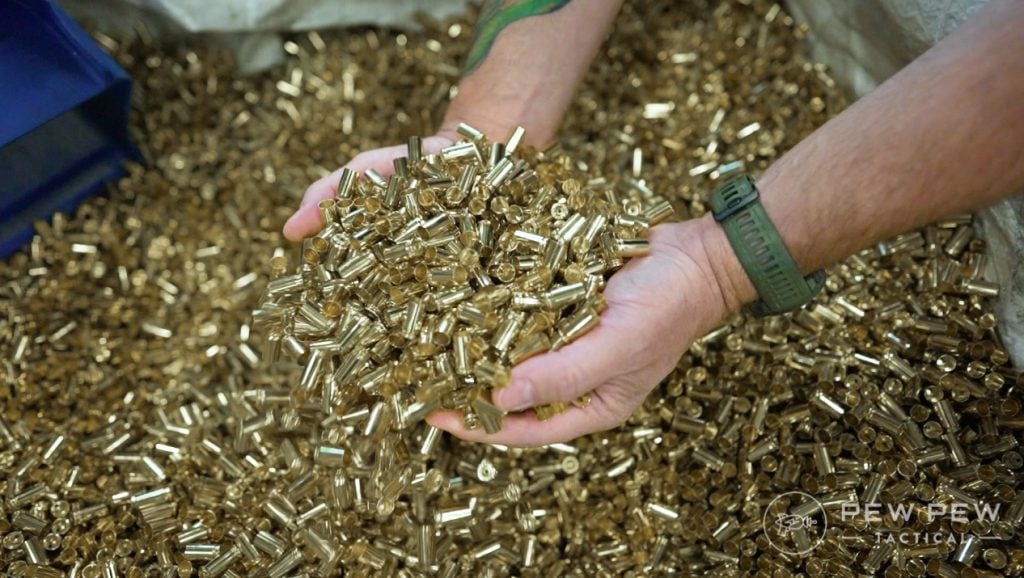
Now, if you’re here, you probably already know all about the differences between cast bullets, hollow points, FMJS, and such. The ammunition basics, if you will.
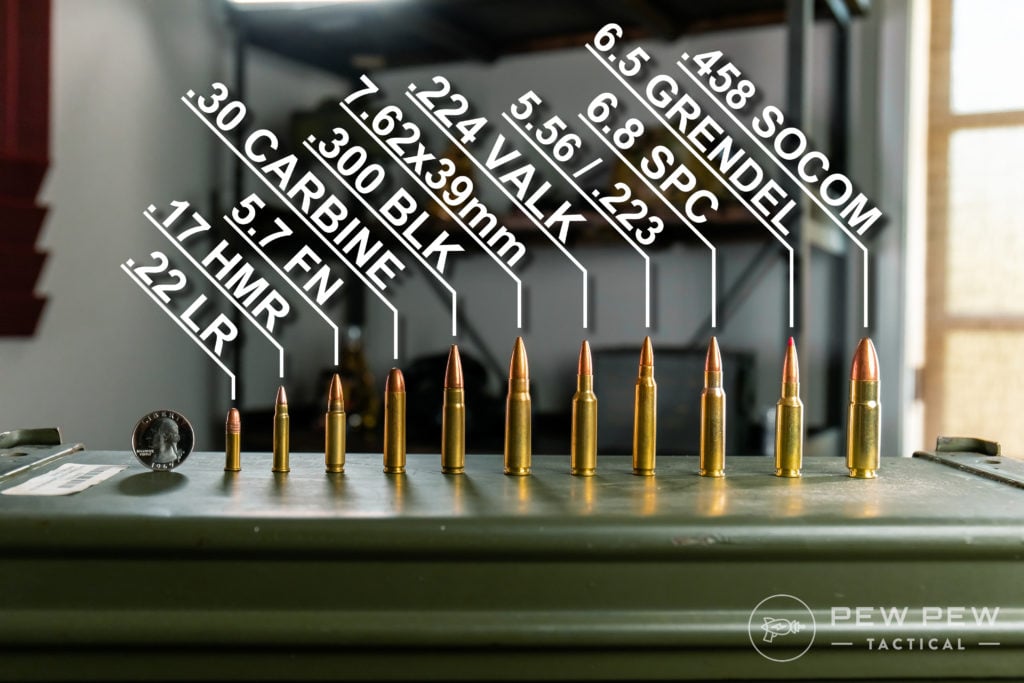
Of course, there’s so much more to ammo than just what you can easily find on the shelf at your local sporting goods store. Much more.
Today, we’re gonna talk about some of the wilder and crazier ammo types that are out there, the types of things you have to special order and pay extra hazmat shipping charges on. Don’t worry though…it’s worth it.
Oh boy, is it worth it.
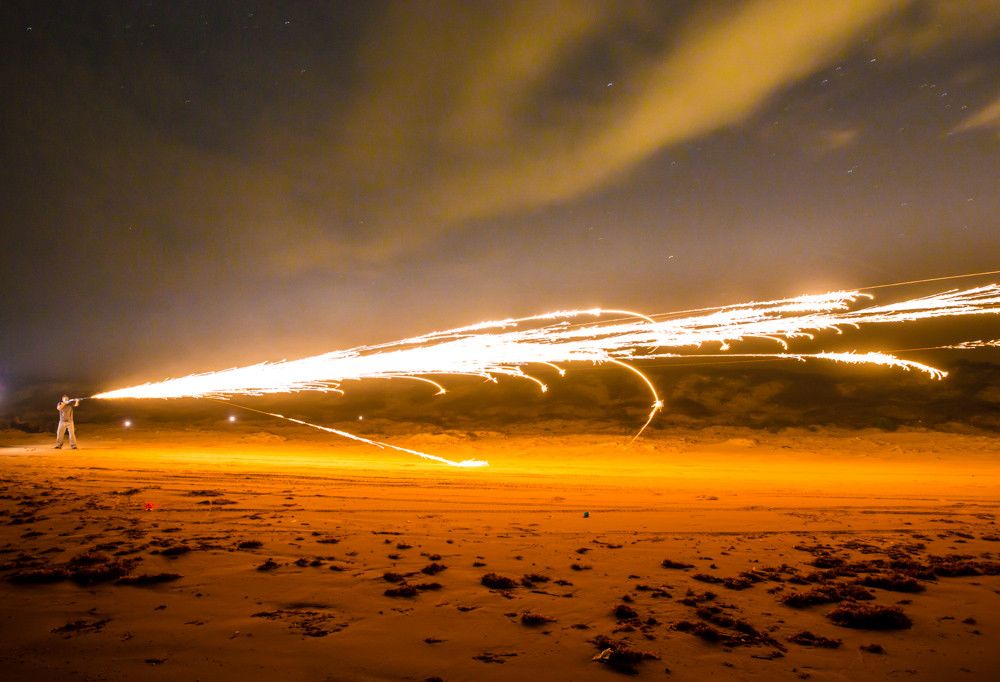
Note: It should go without saying but I’m going to say it anyway — check your local, state, and federal laws regarding any of these ammo types before you purchase. In the case of the incendiary ones, take extreme care when shooting around flammable materials such as dry grass or other foliage.
Table of Contents
Loading…
Megan Kriss contributed to this story.
Shotgun Ammo
Shotguns are the gateway drug of the exotic ammo world. They open up a whole host of opportunities to use interesting ammo that you just don’t get the chance to use with rifle ammo. Here are some of our favorites!
Dragon’s Breath
If you’ve heard of any of the specialty ammo on this list, you’ve heard of dragon’s breath rounds. These are shotgun rounds, usually 12-gauge, that let lose a stream of fire about 30 yards long.
This fireball burns at around 4,000 degrees Fahrenheit and is sometimes used to kick off controlled burns. But mostly it’s just used to make one great big cone of fire come out of your shotgun barrel.
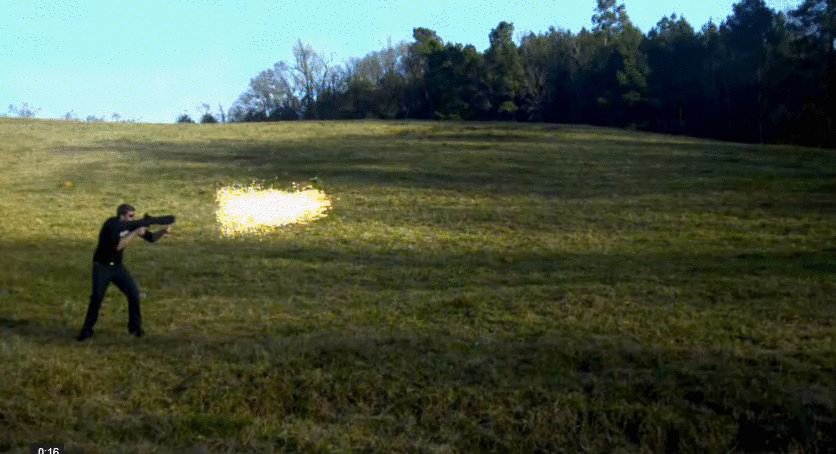
Dragon’s breath rounds (also called flamethrower and “firewall” rounds, depending on where you buy them) are loaded with lots of little magnesium balls that ignite shortly after leaving the barrel. This creates a brief, but brilliantly bright and incredibly hot gout of fire that can do serious damage if you aren’t careful.
Definitely keep this one on sand and dirt, maybe out in the desert or an empty field somewhere unless you’re actively trying to burn something down.
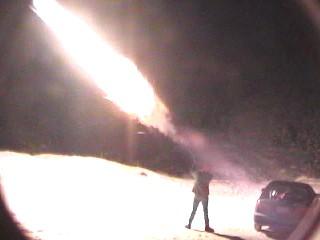
And I would say that using it indoors, such as for home defense, is going to be just as bad for you as it would be for an intruder.
Also keep in mind that while dragon’s breath is mostly safe for your barrel, it is horrendously dirty. One dragon’s breath round will foul your barrel about the same amount as shooting an entire box of cheap target birdshot.

Flares
If you’re looking for something that’s a little more “Oooh, ahhh” than “OH GOD,” flare rounds might be a good option. These rounds work just like normal signaling flares and are available in a variety of colors.
While flare rounds are still a fire hazard, they are much safer than dragon’s breath rounds in that respect, and they’re not nearly as likely to start a brushfire (though you should still be very careful with them).
These flares work great as emergency signaling devices out in remote areas and are perfect for backcountry hunters and those who live a little off the grid.
Also, they’re just darn fun. You can turn your shotgun into a miniature multi-colored fireworks mortar for relatively cheap… they’re still $5 or so a pop though, so pick your moment carefully.
Bolo Rounds
Based on the ancient bolo hunting tool, bolo rounds (also called chain shot, ball and chain rounds, or “Macho Gaucho” rounds) consist of two steel ball bearings connected by a length of steel cable.
The result is a very different round from most out there. You have two fairly mobile ball bearings attached to each other by a cable that’s dangerous in its own right at the speeds it’ll obtain when fired from a shotgun.
Unfortunately, accuracy is abysmal and performance is…questionable.
Picking them up just for fun to plink at an old box or to try and shred a can? That I can see being worth the cost of admission.
Flechette Rounds
Flechettes are tiny steel darts that first saw heavy use in the heavy jungle environments of Vietnam. Imagine a shotgun that fires hardened nails rather than buckshot, and you’ll be in the right ballpark.
At close ranges, flechette rounds can put a cluster of steel darts through dense foliage, soft body armor, and even thin sheet metal. It goes without saying that anyone getting hit with these is going to have a tremendously bad day.
For practical self-defense purposes, you’re probably still better off with 00 buck. But this is one of the few rounds on this list that I can see being a realistic option for serious defensive use.
For the cost and the only marginal effectiveness at range, I’d just as soon have buckshot though.
All in all, I’d call them a fun novelty to bring out when you want to cause a little destruction at the range.
Rifle Ammo
Not a shotgun kind of person? No worries!
There’s still plenty of fun you can have with your rifle. Here are a few weird ammo options for the rifle-shooting readers out there.
Tracers
Tracer rounds are just plain cool. Expensive, but cool.
They have a magnesium tip that ignites chemical compounds, usually strontium-based, that is applied to the end of the bullet. This burning compound causes the round to light up and be much more visible than a normal bullet.

Tracer rounds are primarily used by the military, for shot marking and target acquisition. One soldier lays down fire on a target or position, and suddenly their entire squad has a bright red line showing them exactly where to shoot.
Pretty handy in a sustained gunfight.
They can also be used by machine gunners to make sure they’re suppressing close enough to a target. In some cases can be loaded close to the end of a soldier’s magazine to give them a very visible indicator when they’re about to hear a click instead of a bang.
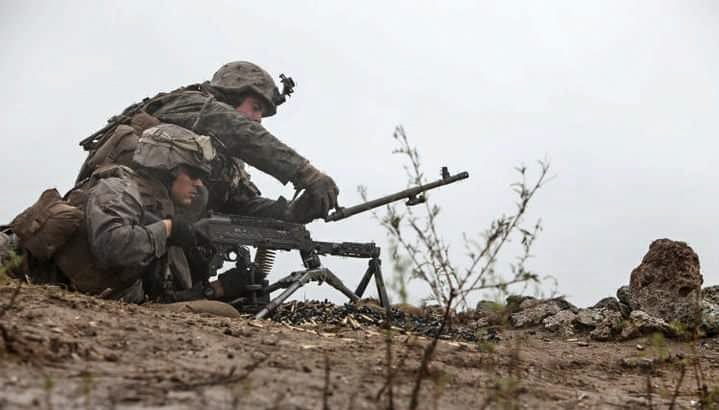
There are three different types of tracer rounds: bright, subdued, and dim.
Bright ones are, as the name implies, the most visible version and probably the best for civilian use.
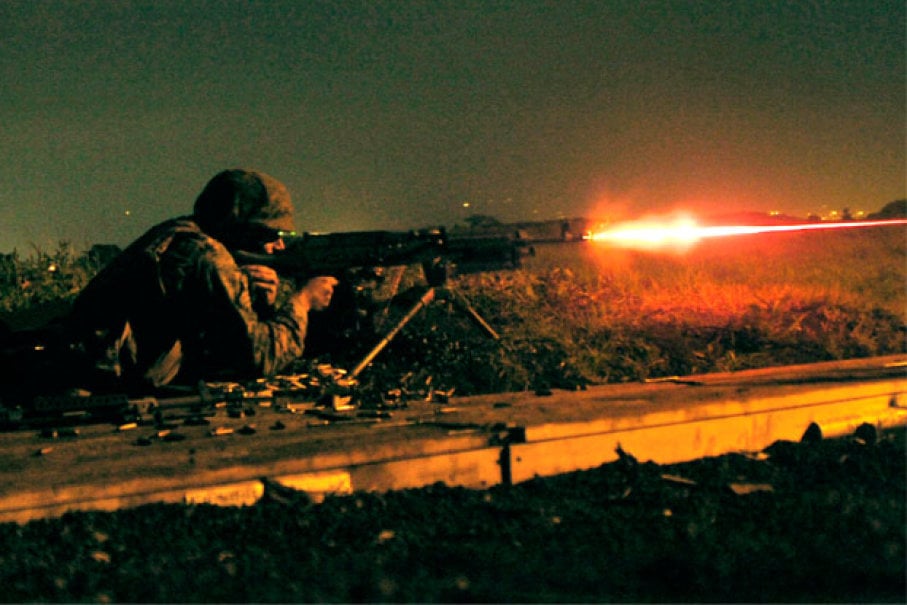
Dim tracers are almost entirely for use with night vision optics. On the other hand, subdued tracers have a delaying effect built into the tip that causes the bullet to ignite one hundred yards or more from the barrel.
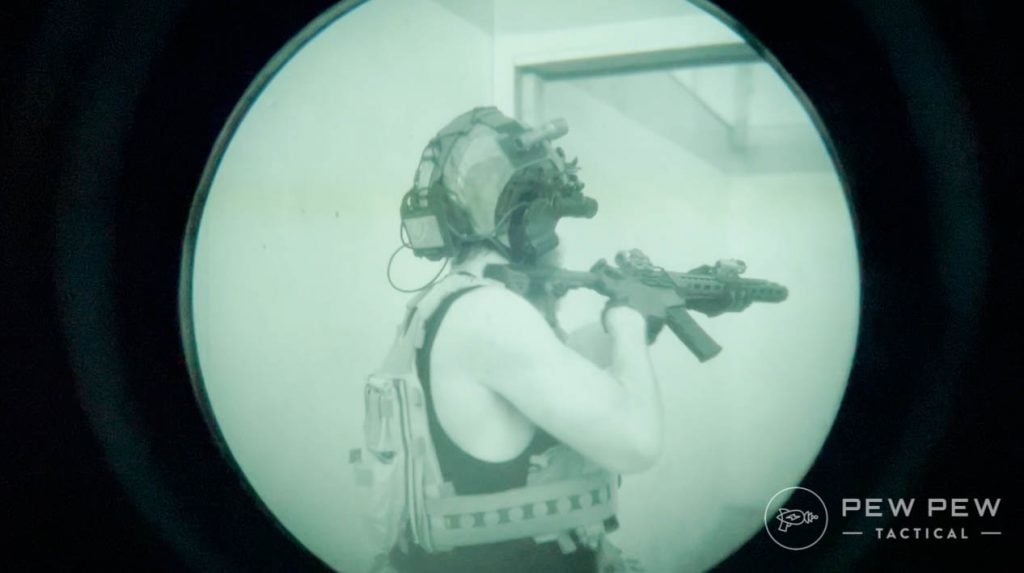
This makes it harder for enemies to follow the tracer path back to its source. Most modern tracer ammo has at least some delay effect like this.
Like the flares and dragon’s breath rounds, tracers are incendiary (with some exceptions we’ll get to in a minute), so be careful about using them around dry foliage or in windy conditions.
Non-Incendiary Tracers
Modern science and the desire to shoot laser beams like a Star Wars character have given us the non-incendiary tracer, called Streak Visual Ammo.
Streak Visual Ammo uses a non-burning phosphor compound painted onto the back of the bullet to give the shooter a tracer-like effect, without the risk of torching anything nearby.
They produce no heat or flame and are therefore perfectly legal in most places where tracers are banned — though you should still check your applicable laws.
They’re available in a variety of colors and aren’t half bad on price either…at least not for specialty or novelty ammo.
.50 Cal Armor Piercing Incendiary
If you’ve got a .50 cal already, you’ve already got something that’s going to make your range buddies more than a little jealous.
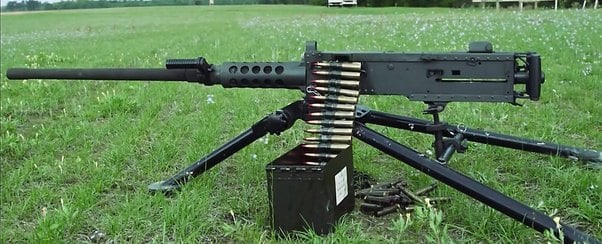
But if you want to be a little more extra about it, get some fancy ammo to go with it.
Armor-piercing? Nah, that’s an old hat. Incendiary? That guy a few lanes down has incendiary rounds. Armor-piercing and incendiary rounds that combine the best of both worlds? Now we’re getting somewhere.
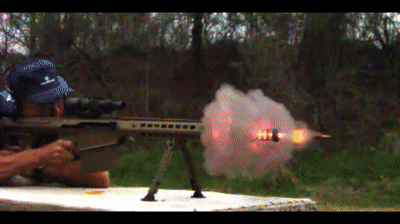
If you’ve ever wanted to punch a flaming hole into an engine block, this is the round for you. It should go without saying that you should be extremely careful not only of your target, but everything behind it for several miles when you use this.
Armor-piercing incendiary rounds are also somewhere above the tracers but below the dragon’s breath rounds on the fire hazard scale. On the scale of pure fun though, they’re off the charts.

Other Random Rounds
.11mm Whatzit
So, what happens when you take a No. 6 birdshot pellet and place it into a .22 short blank? You get a wildcat cartridge called .11mm Whatzit. That’s a purposeful period.

It’s not 11mm it’s .11 mm as in point-eleven-millimeter. It’s teeny tiny and well, useless. There isn’t a firearm that loads it and it’s really just a meme round.
It’s silly, but come on, I can’t hate it.
.22 Earsplitten Loudenboomer
Yep, you read that’s right, the .22 Earsplitten Loudenboomer.
It’s a real round created by some very respected names in the firearms world in the 1960s – including P.O. Ackley and Bob Hutton, editors of Guns and Ammo. Ackley, in particular, had a history of creating some famed wildcat rounds.
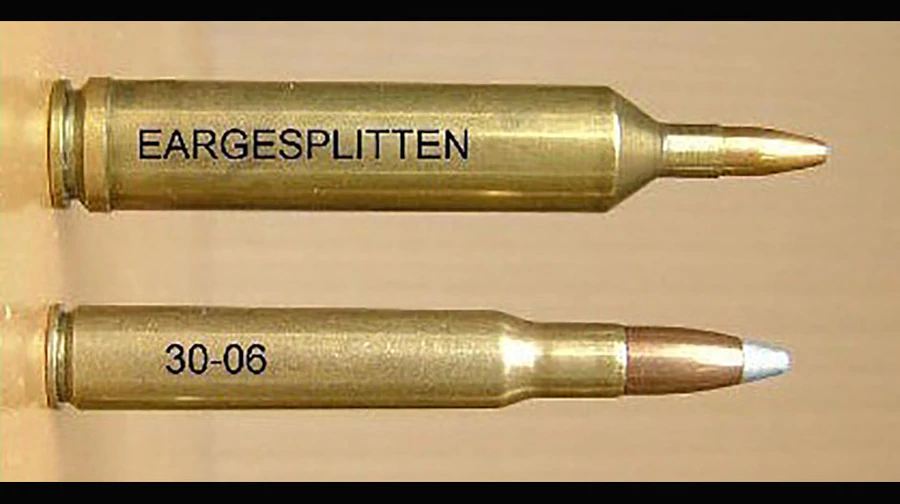
The Earsplitten Loudenboomer was meant to reach 5,000 feet-per-second. And the cartridge utilized a .378 Weatherby Magnum cartridge with a 50-grain .224 projectile atop it.
Ultimately, the round reached 4,600 feet-per-second, which turns out to be beyond Mach 4!
Yet it never reached the 5,000 FPS requirement. It remains a fun round and an interesting part of history.
.224 Boz
This is the first round on the list that someone built for specific purposes. The .224 Boz is what happens when you neck down a 10mm cartridge to accept a .224 caliber bullet.
This would create a cartridge that could be chambered in a handgun and submachine gun.
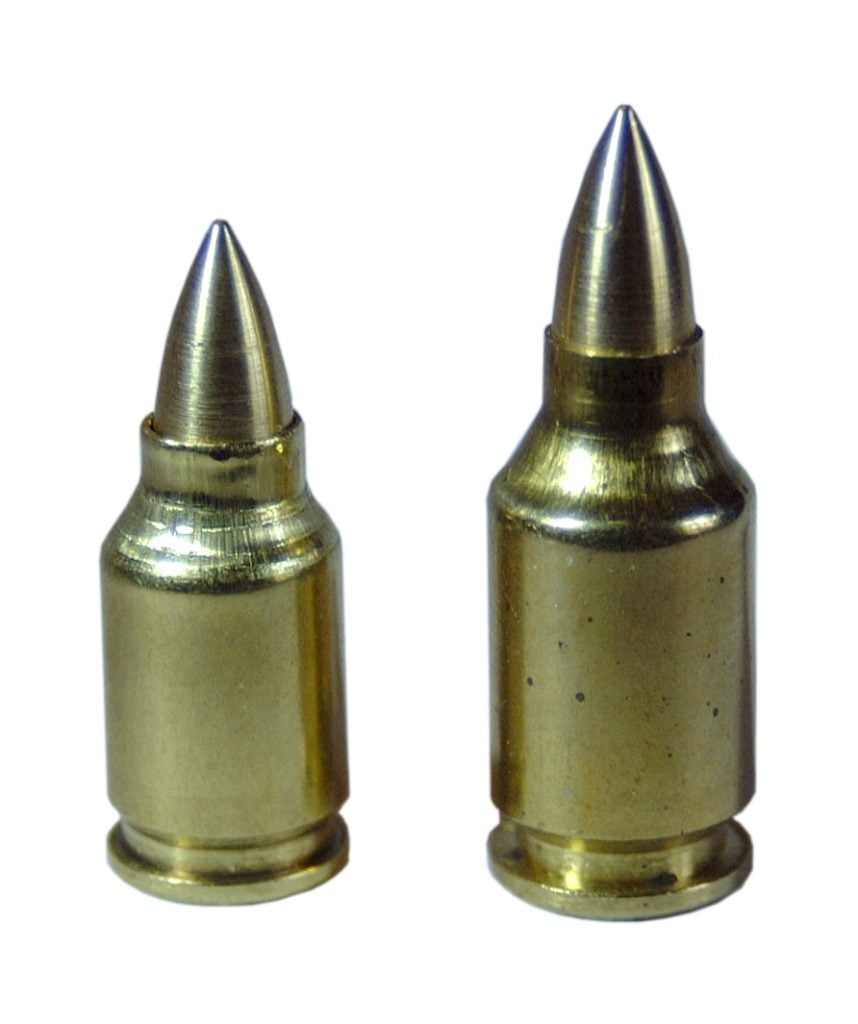
Its idea was simple…let’s pierce body armor — specifically, soft armor in an SMG and handgun package. This same idea created PDW cartridges and that’s what the .224 Boz fought against.
Tests showed the round performed favorably against the 5.7 and 4.6 rounds; however, these tests took place in 1999 and 2000.
In 2001 the defense industry wasn’t worried about a war with armored foes. Nah, we were set to fight the hardened, unorganized forces in Afghanistan.
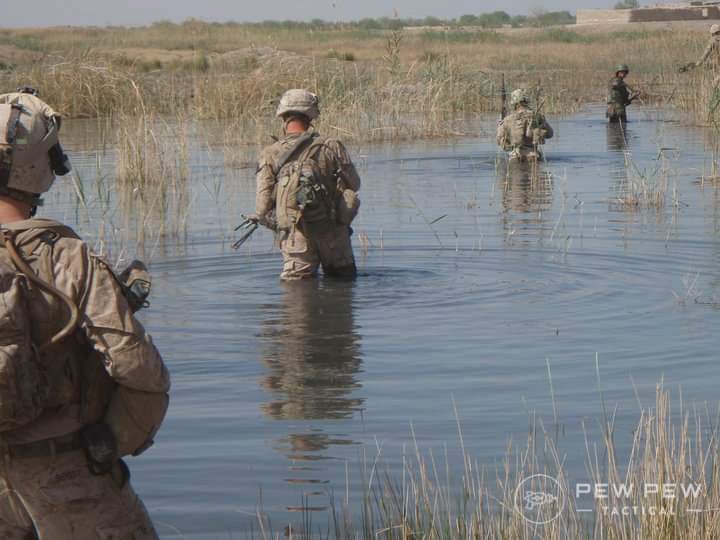
Lessons learned from the Globar War on Terror reduced the PDW and SMG to a very niche role and made the short carbine the star of soft armor piercing.
The .224 Boz fell away, to be forgotten.
.22 Tuba and Tuba 2
The .22 Tuba and Tuba 2 started as a joke. A machinist and all-around cool guy Zachary Weighman began making jokey rounds that placed a very small .22 LR cartridge onto a massive, necked-down casing.
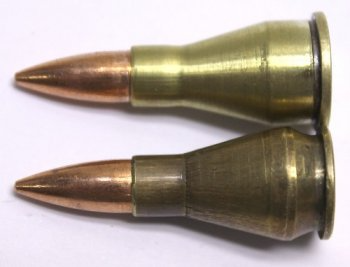
A friend kept suggesting he make it a real round. At the time these were all brass and created by Zachary Weighman entirely. That friend kept pestering him, and eventually, he made a real round by necking down a .45 Long Colt, and later a .44 Magnum round – calling it the .22 Tuba
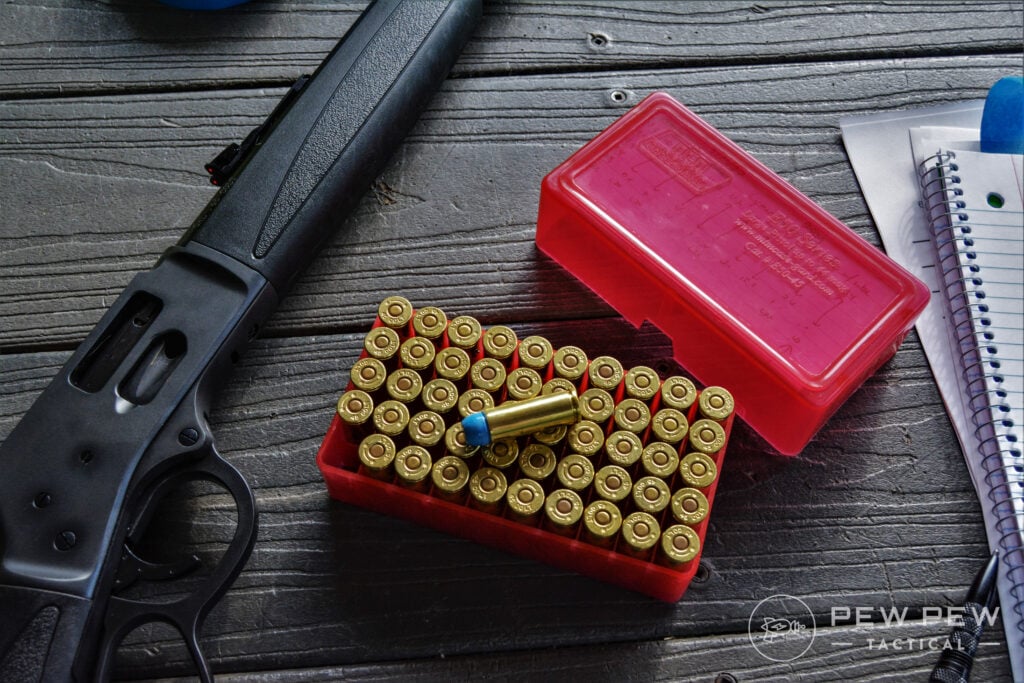
He made a rimless model with a .45 ACP cartridge necked down to accept a .22 caliber projectile. Later, he turned a .410 shotgun into a rifle to chamber the round.
Neither the Tuba nor Tuba 2 became anything more than a creation of Weighman, but it’s a fun round.

The 40-grain, .22 LR projectile reached 2,300 feet-per-second for Weighman’s mutt rifle. You can buy an inert version of this ammo now and it looks hilarious.
For longevity’s sake, the projectile is not a .22 LR, but a .224.
The Rocket Ball
Jump in my DeLorean and let’s hit 88 MPH because we are going back to 1848.
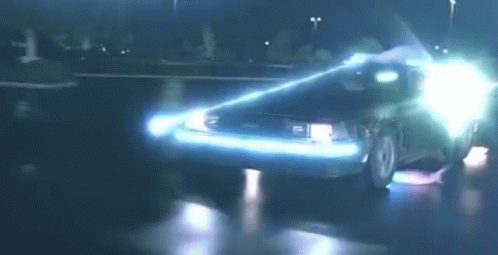
In 1848, a man named Walter Hunt created Rocket Ball ammunition — arguably the first example of caseless ammunition.
Rocket Ball essentially used a Minie ball (popular in rifled muskets). This projectile featured a hollow rear that Hunt filled with gun powder. He then capped and fitted it with a primer. The whole thing functioned like standard modern ammo.
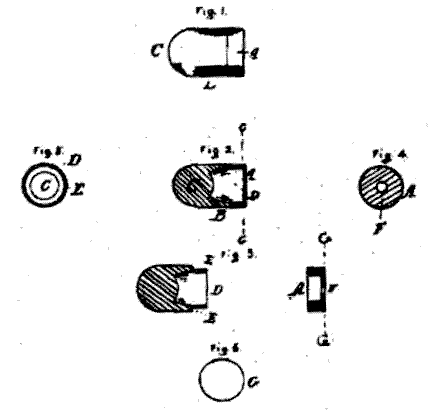
This design worked for repeating action firearms, specifically lever-action guns. Quite a modern design for 1848 but it wasn’t without problems.
Rocket ball ammo was super weak, weaker than a .25 ACP pocket pistol and these were full-sized rifles.
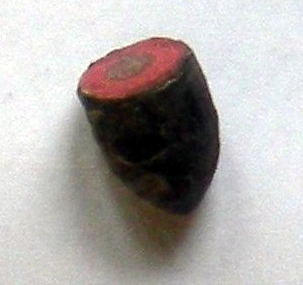
The range sucked, and reliability wasn’t great. But for 1848, this was a genius invention and still pretty dang cool.
Conclusion
There are some really interesting specialty rounds out there, some fun, some terrifying. If you choose to buy any of these, you’ll probably find something fun to do with them at the range–just be safe.
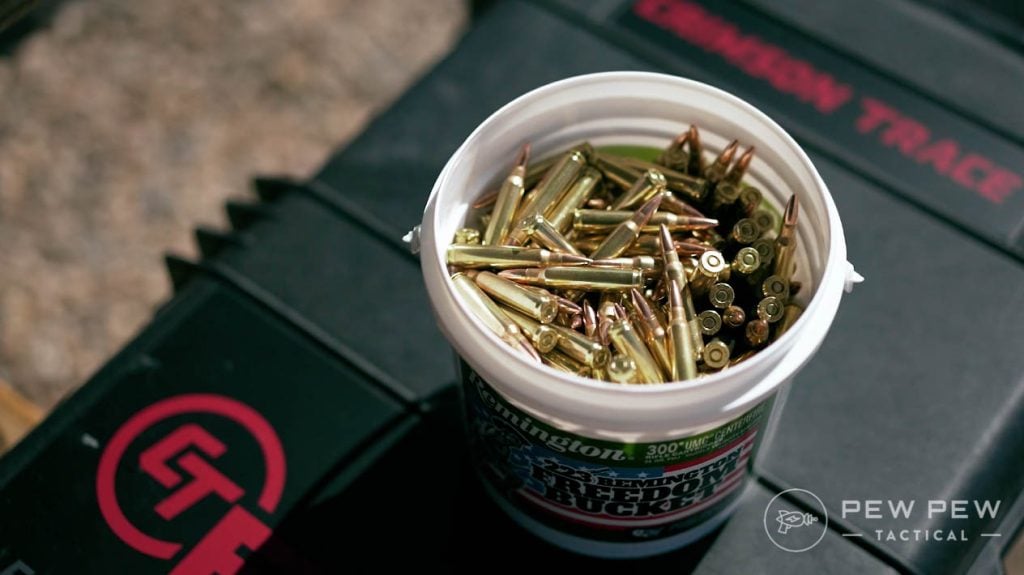
Very few of the “off the wall” ammo varieties out there are terribly practical, especially for civilians, but some of them sure are a blast at the range.
Which of these specialty rounds is your favorite? Let us know below. Want to see more ammo reviews? We’ve got ’em! Want more odd stuff? Weird Tactical Things On Amazon (that aren’t all that bad).

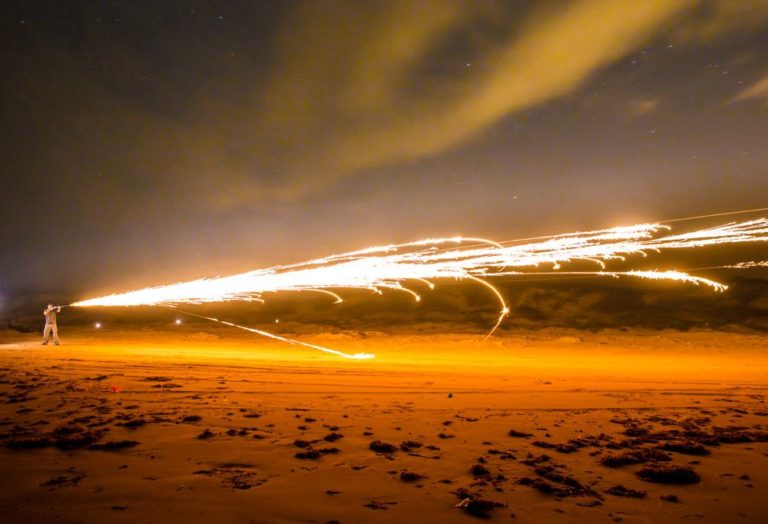







6 Leave a Reply
No error here at all pertaining to tracers. Incendary tracers have a compound inside the back of the projectile that burns, non incendary tracers have luminescent paint stuck to the back of the projectile. Excellent article.
NOICE!
That's not how tracers work. The chemical is inside the projectile (bullet), and is ignited by the heat of firing. Any paint on the outside of the bullet is only for identification.
Yeah, I would expect an error like that on some internet listicle site, but not one dedicated to firearms. That sort of basic misinformation does serious damage to the credibility of this site. I'm fairly new here, but now I'm having some serious reservations about what I'm reading.
Before you complain, go to the manufacturer's web site. The author isn't wrong.
No love for Raufoss/M211?